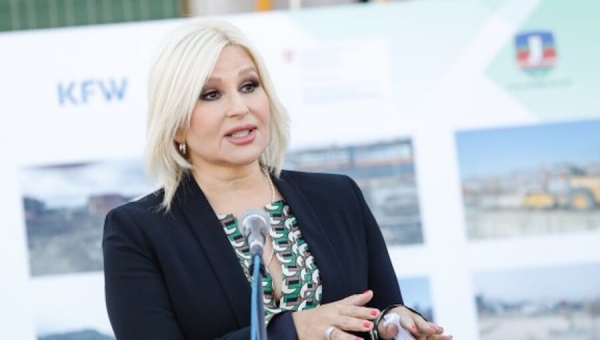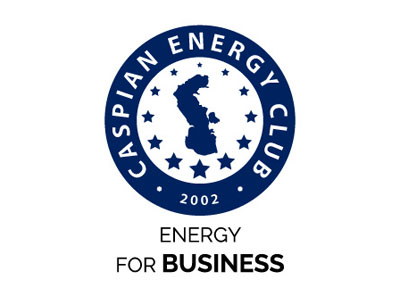Caspian Energy (CE): Dear Madam Minister, to what degree does the «gas component» affect the economy and long-term plans of Serbia today?
Zorana Mihajlovic, Deputy Prime Minister and Minister of Mining and Energy of the Republic of Serbia: For Serbia, as for many other European countries, the key question is how to be energy safe, because it is also a matter of national security, as well as economic stability and development. Gas security is an important component of energy security, especially in countries that are not rich in this energy product. The source of our gas security is therefore in our ability to diversify sources and suppliers of gas, to have our own gas storage facilities, and to connect with all the surrounding countries so that gas from different sources can reach Serbia and be transported through Serbia. Serbia’s location is such that Serbia should be a transit corridor in energy, as it is already in transport.
Therefore, the first component of gas security in both the short and long term is the diversification of suppliers. Serbia has the opportunity to get gas from several directions, because it has built the Balkan Stream gas pipeline, but it is still dependent on one supplier, and that is an enormous risk for small economies, regardless of who the supplier is. Unfortunately, like many other European countries, Serbia has not solved this issue earlier, and with that vulnerability, we have entered the energy crisis.
The construction of the gas interconnection Serbia-Bulgaria, with a capacity of 1.8 billion cubic meters of gas, is of strategic importance to us because it will enable us to connect to the gas pipelines in the Southern Corridor via Bulgaria and Greece and enable us to get gas from Azerbaijan and the Caspian region, LNG terminals in Greece, as well as other sources in the Middle East. We expect that next year at least 30 to 40 percent of our gas needs - and they average at 3 to 3.2 billion cubic meters of gas per year–will be met from other sources.
Also, our plan is to connect via interconnections with other neighbors of ours, primarily Northern Macedonia and Romania. We are also discussing this with Bosnia and Herzegovina, and we will also discuss it with Croatia. Only if we are connected, as a region, can we be energy safe, because no country can do it alone.
Also, the construction of a new gas storage facility, with a capacity of one billion cubic meters of gas, is planned, where the estimated value of the investment is about 200 million euros. Serbia owns only one part of the existing gas storage facility in Banatski Dvor, while the rest is owned by Russian Gazprom, which means that we cannot make all decisions independently. For this winter, we expect to meet our needs from the contract with Gazprom, by withdrawing the agreed quantities of gas from the storage facility in Hungary, and reserves from our gas storage facility in Banatski Dvor.
CE: What could you say about the investment attractiveness of the Serbian energy system, and which new regional and international projects are planned for implementation?
Zorana Mihajlovic:By adopting a new legislative framework in energy, Serbia has taken the first step in the energy transition, and simultaneously created conditions for much more investments in the energy sector, which are a prerequisite for a successful transition.
With the adoption of the first independent Law on Renewable Energy Sources, we have created the conditions to increase the share of green energy in the energy mix. The total value of all planned and potential projects in energy and mining is about EUR 35 billion, of which the largest part are projects in RES.
At the moment, the share of solar energy and wind energy in the energy mix is only about 3.5 percent, which means that there is a huge potential for new investments in this sector, both of the public company “Elektroprivreda Srbije”, which did not deal with this enough in the previous years, and of the private sector, as well as through partnerships of private investors with “Elektroprivreda Srbije”.
Particularly important and thus priority projects for us include the construction of two reversible hydroelectric power plants, Djerdap 3 and Bistrica, which are important for security of supply in the conditions of transition to green energy due to balancing of large capacities used by RES. Also, besides investments in new gas interconnections and gas storage facilities that I have already mentioned, investments in the transmission and distribution system in the electricity sector are planned, where interconnections with neighboring countries are also particularly important.
CE: To what extent is Serbia’s energy system integrated into the EU energy system today?
Zorana Mihajlovic: Serbia is a contracting party to the Energy Community, an organization that has as its main goal the creation of a pan-European energy market, i.e. the connection of the market in the countries of Southeast Europe and the Black Sea region with the EU energy market. This is, therefore, an area that we are already working on and where, besides creating preconditions in terms of harmonization of regulations, it is very important that there is an infrastructure in place to connect with energy markets. In this sense, we have also launched projects and initiatives for connecting with neighbors both in the gas sector, and in electricity, because Serbia meets all the conditions to become a transit corridor for energy and energy products and thus contribute to greater energy security of the region, as well as greater integration of the market in the region and the region with the EU.
Also, let us not forget that the Green Agenda and the energy transition are an important part of Serbia’s European path and that we have already made significant steps in the EU accession process, where harmonization of the normative framework is only the beginning. I believe that the opening of Cluster 4 in negotiations with the EU will encourage faster implementation of reforms in the chapters covered by this cluster–energy, environment and climate change, transport and trans-European networks.
CE: Do you plan to use the Southern Gas Corridor?
Zorana Mihajlovic: In parallel with the execution of works on the interconnection with Bulgaria, which will be completed by the autumn of next year, potential sources of natural gas supply along this route are analyzed. The Ministry of Mining and Energy is already conducting talks with the line ministry of Azerbaijan, so that long before the completion of the pipeline, we have a contract for the supply of this energy product.
In the current geopolitical conditions in Europe, it is certain that the importance of the gas reaching Europe by the Southern Gas Corridor will increase, as discussed by the memorandum signed between the European Commission and Azerbaijan to double gas imports for the EU. Azerbaijani gas is an important part of the solution for the diversification of gas supply sources in our region, where Serbia, in perspective, with the construction of interconnections with its
neighbors, can be not only a user of gas from the Caspian region, but also a transit country through which that gas will arrive to other countries in the region.
CE: Do you support the development of the LNG terminals network along the entire maritime perimeter of the EU, how will this help the processes of diversification of sources in such small markets - “islands” of the EU?
Zorana Mihajlovic: Diversification of gas suppliers in Europe was topical ten years ago, but little was done about it, and the consequences are seen and felt today, when we have an energy crisis. This applies both to our region and to Serbia, where the first steps in the construction of the interconnection to Bulgaria were made a decade ago, so that only after many years of halt, this project would be returned to the priorities of this Ministry. The importance of Serbia-Bulgaria gas interconnection is also reflected in the connection with LNG terminals in Greece, where we expect the terminal in Alexandropoulis to be completed at a similar time.
Our idea is to create infrastructure prerequisites for connection with other LNG terminals in the area, such as the LNG terminal in Krk, Croatia, as this means an increasing choice and competition among potential suppliers. The construction of LNG terminals, together with the construction of interconnections that would allow that gas to reach all parts of the region, is another way to increase our energy security. In times of energy crisis, the possibility of connecting with gas producers that are geographically more distant, but can provide certain quantities, should also not be underestimated.
CE: Which renewable energy sources are the most market-efficient and have the highest efficiency in the Serbian market?
Zorana Mihajlovic: Serbia has great potential for investment in RES, solar, wind, biomass, geothermal and other sources. The Ministry’s priority was to create a quality and modern legal framework, aligned with EU regulations, so that we could attract investments in RES.
The first independent Law on the Use of Renewable Energy Sources (RES) has just been adopted to enable new investments in RES and the increase of the RES share in the total energy produced. The new law introduces, among other things, market premiums instead of earlier feed-in tariffs, which have been kept only for small plants and demonstration projects, under EU state aid rules. The new incentive system will expose producers to the impact of the market and competition, reducing costs for citizens and the economy. For the first time, this law has also recognized green hydrogen as a RES, which will play an increasingly important role in the energy transition.
Global data shows that the prices of electricity production in the last 10 years from solar power plants have decreased about seven times, from wind power plants halved. The development of technologies and market trends have already given impetus to the move towards green energy and will continue to go in this direction, regardless of current developments in Europe in times of crisis, and it is up to us to create the conditions to convert the interest of investors into concrete cooperation and projects that will enable Serbia to be energy safe, together with investments made by public companies and the state.
Thank you for the interview.





